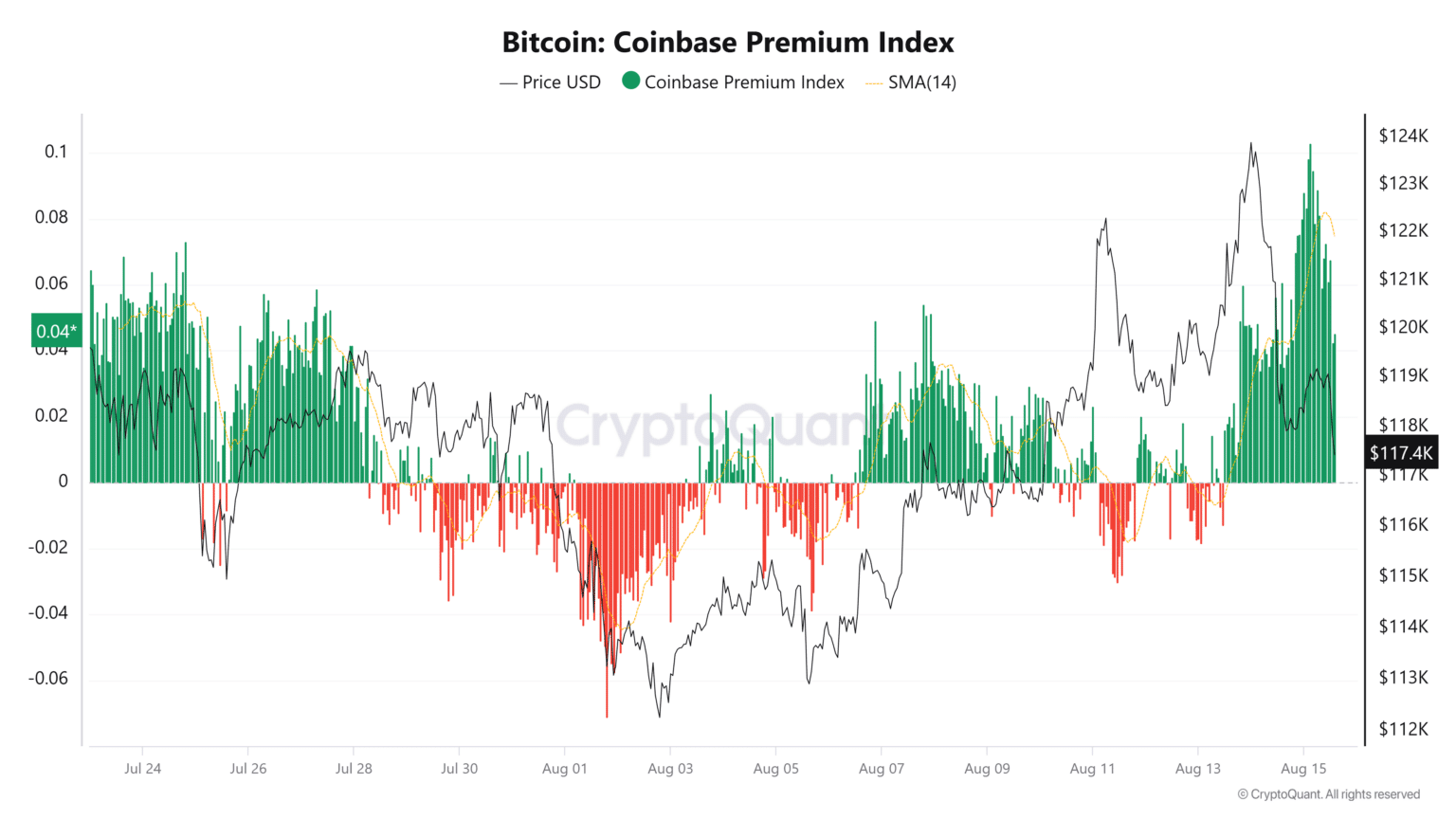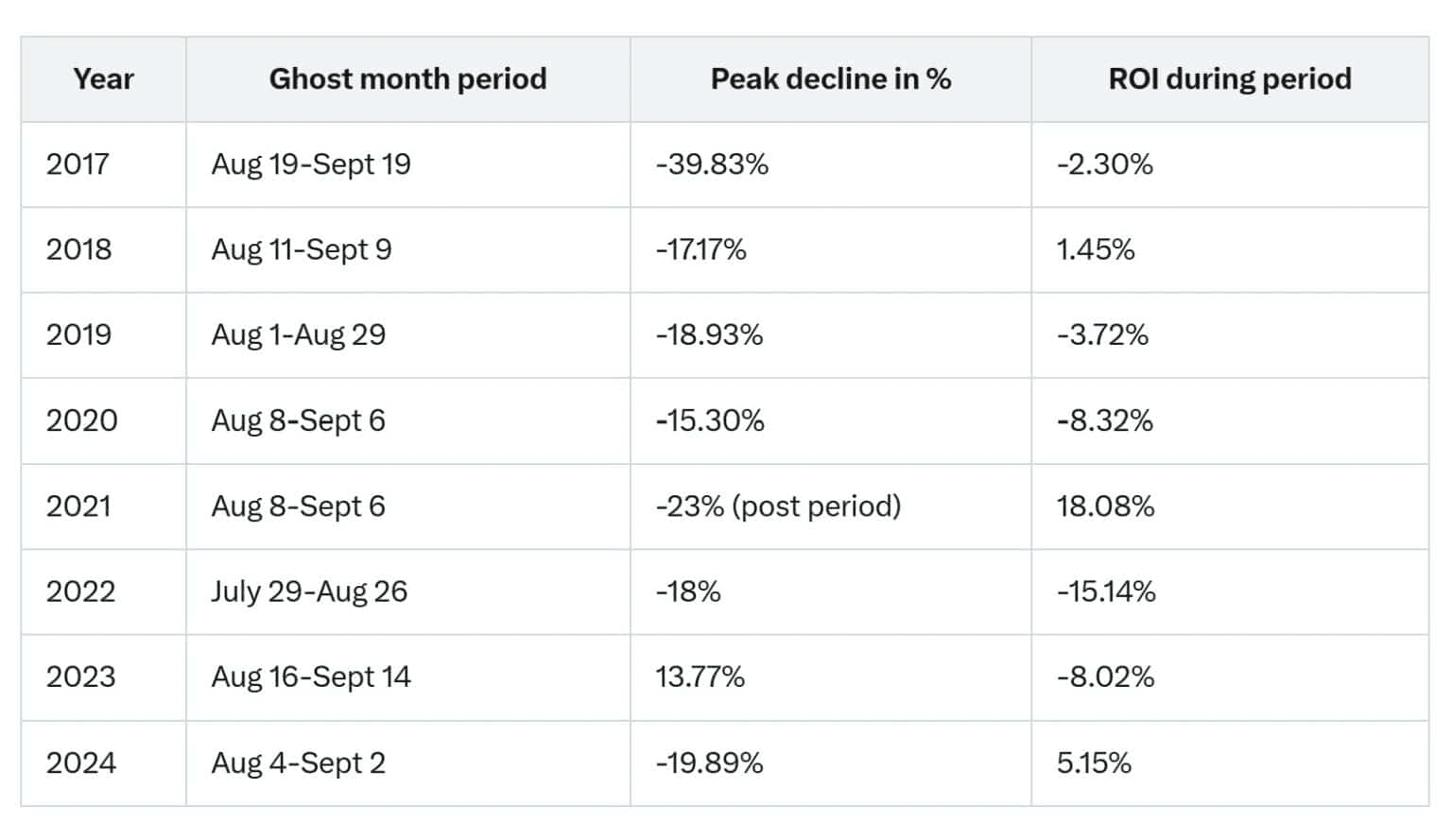11:10 ▪ 5 min read ▪ by Eddy S.
Stay informed
▪
Bitcoin (BTC)
Bitcoin falls below $117,000 after a peak of $124,000. Amid bearish pressures related to the Asian 'Ghost Month' and on-chain signals of resilience in the United States and Korea, the market wavers. The threat of a drop towards $100,000 fuels the tension.
In summary
Bitcoin has fallen below $117,000 after a peak of $124,000, with a confirmed bearish signal.
On-chain indicators show strong demand in the United States and Korea, despite 16,800 BTC sold at a loss.
The 'Ghost Month' could accentuate the correction to $100,000 before a possible year-end rebound.
Bitcoin falls after its record of $124,000: a confirmed bearish signal
After reaching a record of $124,000 a few days ago, Bitcoin suffered a decline of nearly 6%, returning to below $117,000 on August 14. The daily chart revealed a bearish engulfing pattern, a technical signal indicating a trend change. This episode constitutes the most significant pullback of the month, reinforcing the idea of a consolidation phase.
Despite this correction, on-chain indicators highlight a strong market absorption capacity:
The Coinbase Premium Index reached a monthly high on August 14, evidence of increased demand in the United States.
Meanwhile, the Kimchi Premium, a specific indicator for South Korea, returned to positive territory, thus confirming a rebound in local investor appetite.

The Coinbase Premium Index reached a monthly high on August 14.
Moreover, signs of capitulation remained limited. In fact, only 16,800 BTC were liquidated at a loss by short-term holders! This is well below the 48,000 Bitcoin observed in previous corrections.
The 'Ghost Month': when superstition weighs on Bitcoin
Beyond technical indicators, cultural seasonality plays a role. In this sense, the 'Ghost Month', which this year runs from August 23 to September 21, is perceived in Asia as a period of bad luck. Although this belief does not have a direct economic basis, its psychological impact on the markets is real. Among other things, it leads to a decrease in risk appetite and an increase in profit-taking.
Historically, Bitcoin tends to decline during this period. Since 2017, the average recorded drop is 21.7%. With notable episodes: -39.8% in 2017 and -23% in 2021. Therefore, applying this pattern to the current price, an additional correction could bring BTC to the $100,000 to $105,000 range before expecting a lasting recovery.

The performance of Bitcoin during previous 'Ghost Months'.
Is a return to $100,000 for BTC inevitable?
From a technical standpoint, the zone between $116,000 and $117,000 constitutes a key support level for Bitcoin, where spot buying and futures positions are concentrated. If this base holds, the market could quickly regain an upward trajectory. Conversely, a marked retreat of BTC during the Ghost Month would reinforce the scenario of a testing phase around $100,000.
In the long term, several analysts believe that a summer correction of Bitcoin due to the 'Ghost Month' could set up a solid rebound for Bitcoin in the fourth quarter. This will be supported by a recovery in institutional demand and accumulated capital flows. The central question remains whether collective psychology will yield to seasonal fear or if fundamentals will counteract this repeated cycle.
How far will the current Bitcoin drop go? Currently, BTC is moving in a tension zone between signs of resilience and the threat of seasonal correction. If the Ghost Month prolongs the decline, it could perhaps offer an accumulation opportunity for long-term investors before an eventual year-end rally. This annual meeting between superstition and finance reminds us that collective psychology weighs as much as technical indicators in the cryptocurrency market.
Maximize your experience on Cointribune with our 'Read to Earn' program! For every article you read, earn points and access exclusive rewards. Sign up now and start accumulating benefits.